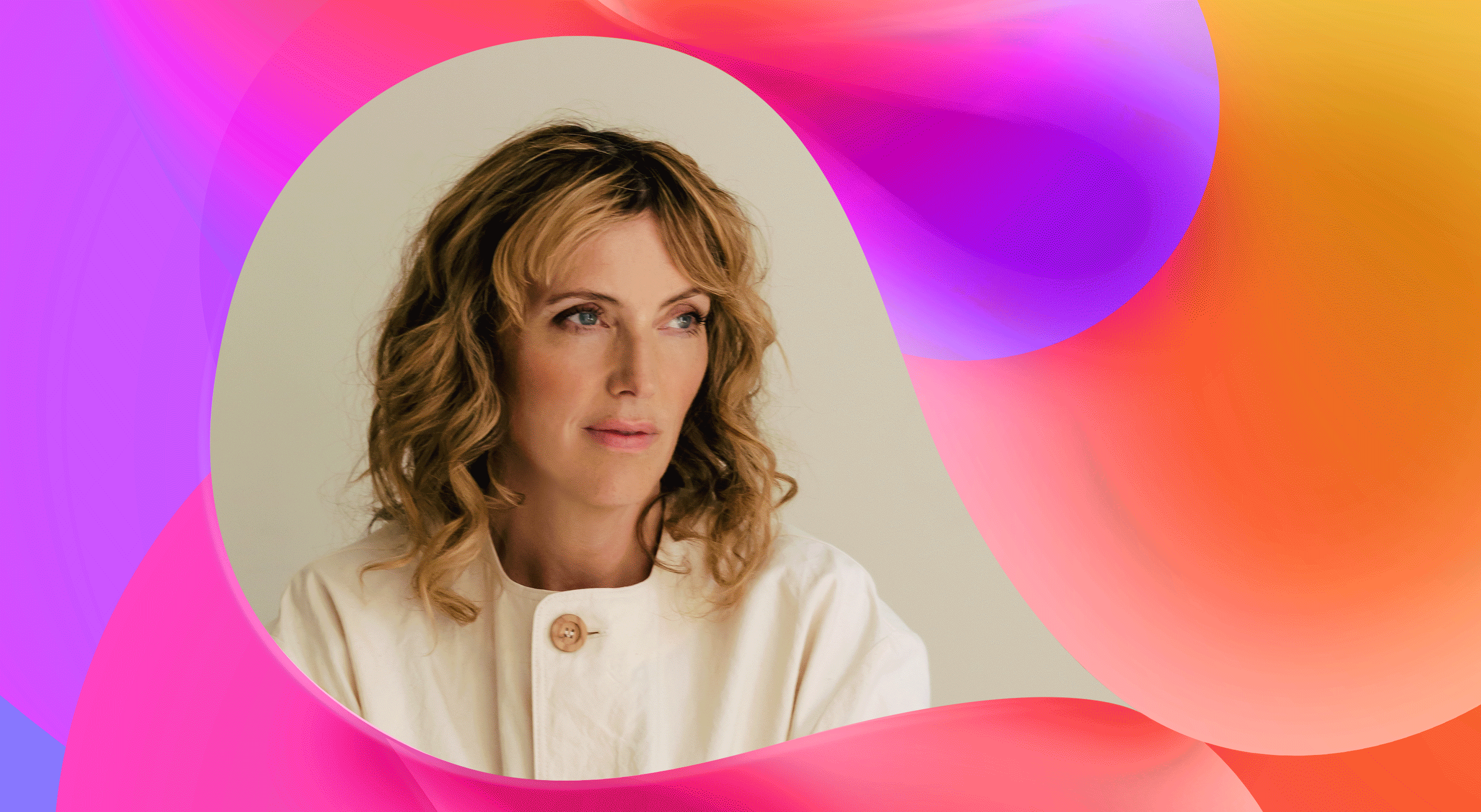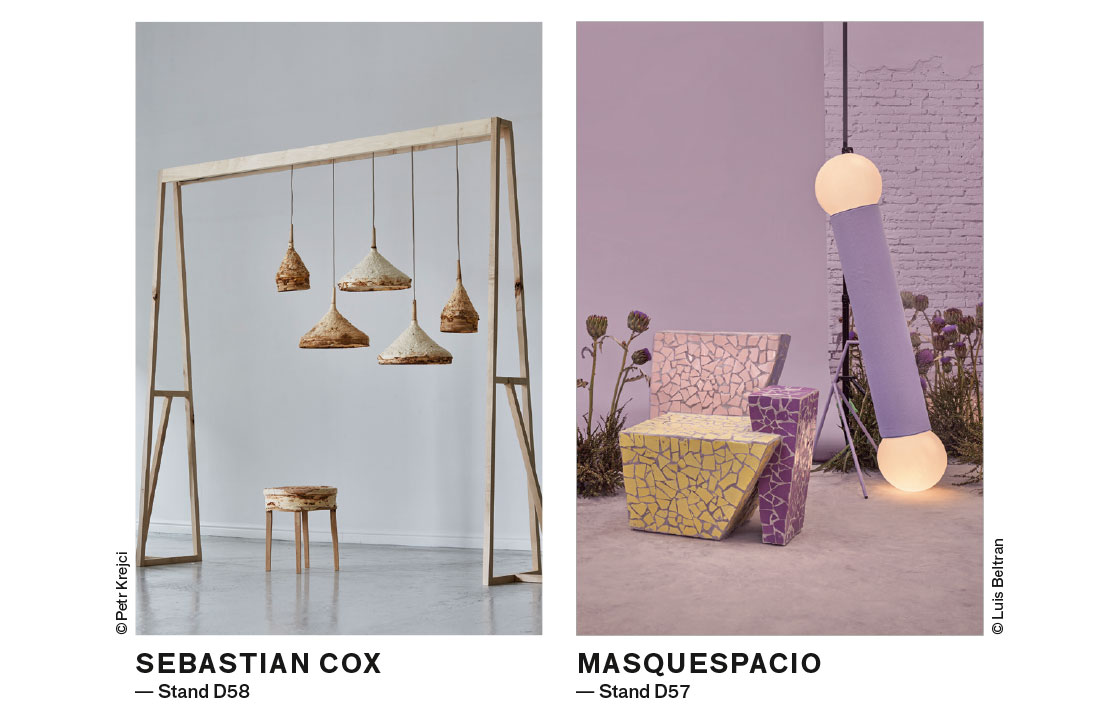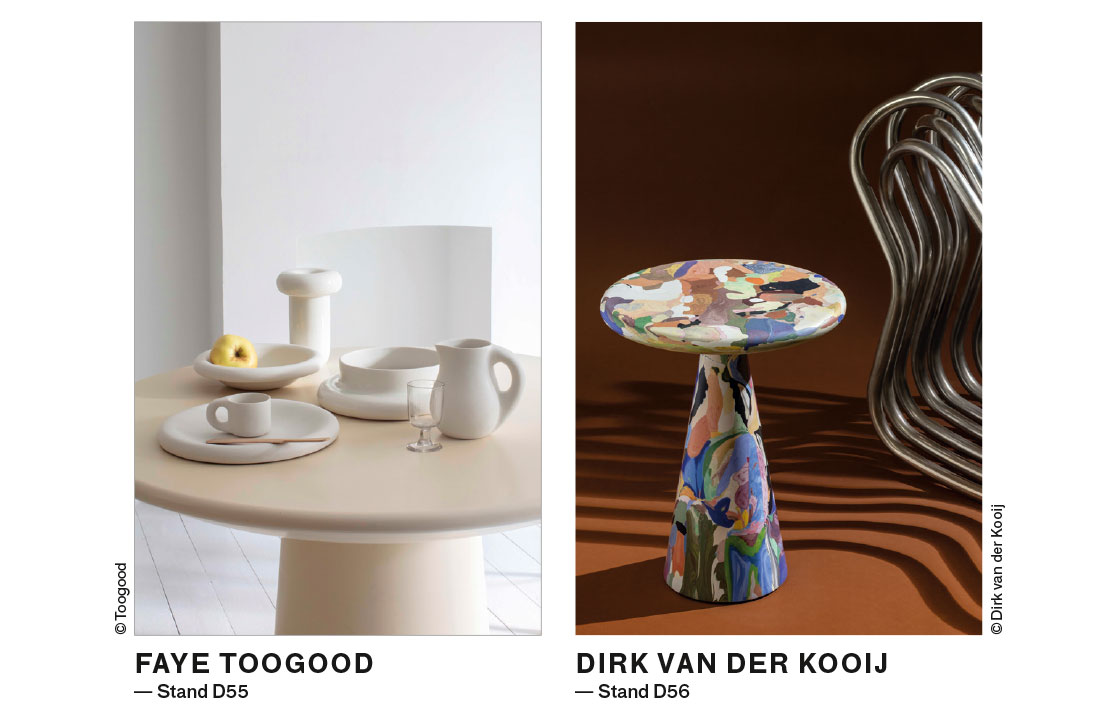The Designer’s Studio: A designer and their brand
Published on 9 August 2023

Many designers choose self-publishing to affirm their vision freely and authentically. Maison&Objet gives voice to four international signatures in a dedicated space.
Since its September 2022 Edition, Maison&Objet has introduced a special presentation of self-published French designers. Talents So French gave them carte blanche to promote their creations in a dedicated exhibition space at the heart of the fair. Bina Baitel, Charlotte Juillard, Pierre Gonalons and Samuel Accoceberry paved the way, followed in January 2023 by Cédric Breisacher, Elise Fouin, Gregory Lacoua and Victoria Wilmotte. A year later, an all-new-revamped event opened to international designers who had chosen the same self-made approach: launching a collection and ensuring its production themselves. Dubbed The Designer's Studio, this year’s presentation offers to share this original vision and entrepreneurial journey with the most significant number. Located in the effervescent Hall 7 and its Signature section, visitors discover the personal production of Brittons Faye Toogood and Sebastian Cox, Spanish studio Masquespacio and Dutchman Dirk Vander Kooij.
Sebastian Cox
The Forester
British designer Sebastian Cox was part of the Maison&Objet Rising Talent Awards dedicated to England in 2017. His eponymous brand is on a mission to produce furniture by generating carbon-neutral emissions and zero waste. His collections are imagined exclusively with self-built wood pieces collected in London and its surroundings. The model Sebastian Cox developed with his wife Brogan is rather holistic: the designer creates his raw material, which he transforms on the production site. The couple works on several acres of forest in Kent, where they settled their workshop. The collections favour London Plane, Sycamore, English Cherrytree or Walnut-tree, and Scottish Elm. “Honest and elegant” furniture where nature takes over. The couple have set themselves the goal of doubling the amount of wild land in Britain by 2040.
Sebastian, can you please introduce yourself?
My name is Sebastian Cox; I am a designer, a maker and an environmentalist. I started my business in 2010, making furniture from coppiced hazel, an abundant but overlooked British wood that overgrows. Today my studio and workshop continue to design and make furniture from sustainable and regenerative English-grown wood; research and develop new materials, including mycelium; design and create structures from English-grown timber; and, most recently, oversee the direct creation and the rewilding of biodiverse wildlands.
What are the advantages of self-edition, and why did you choose this mode of production?
I trained first as a fine furniture maker and went on to study sustainable design. I can’t imagine trying to create solutions to the climate crisis using only one or the other skill set. I wanted to design and make things using solid English-grown wood, which wasn't common practice in Britain. European-grown wood is so often preferred to the unpredictability and character-fulness of British timber. I had to produce them myself in my workshop.
What does Maison&Objet represent for you?
We have travelled less since the pandemic and Brexit. The environmental cost of travel also seems important, given the climate crisis. Maison&Objet represents a much-needed opportunity to reconnect with our peers and colleagues.

Masquespacio
The Cyber-Pop Duo
Masquespacio Studio was founded in Valencia, Spain, from the combination of Colombian Ana Milena Hernández and Belgian Christophe Penasse. Ana focuses on design, while Christophe ensures all logistics and marketing. Since 2010, they have signed, among many exciting projects, the Ichi Station restaurant in Milan, a dining experience as if embarked in a time capsule, a cyberpunk fitness club in Salzburg, as well as the Mango Teens shops in Spain, transporting its young clientele in an (almost) virtual world. Iridescent reflections, bubble-pop tones, and optical illusions are as many testimonies of a joyful and out-of-box style of their own for which they have already won multiple awards. The studio has just launched “Mas Creations”, its self-publishing furniture collection. Their first significant piece is a chucklesome marble, velvet and brushed steel Rocking Chair, influenced by the Memphis Style and whose name encapsulates the whole of their uncommon inventiveness: “Too Much. A manifest.”
Ana, Christophe, can you please introduce yourself?
Ana: I was born in Bogota, Colombia, and at eighteen years old, I decided to move to Spain to study interior design. After finishing my studies together with Christophe, we started Masquespacio in 2010.
Christophe: I was born in Vilvoorde, Belgium (five kilometres from Brussels) and moved to Spain seventeen years ago after falling in love with this beautiful country and culture when visiting as a tourist. After working for a few years in a Cash and Carry company, we started Masquespacio to explore Ana’s talent.
What are the advantages of self-edition, and why did you choose this mode of production?
We have been developing designs and design strategies for several brands for a long time. From the beginning, we got very interested in the production process, so we started to dream about founding our own furniture brand at almost the beginning of our career. Auto-producing allows us to create freely and learn from our equipment, exploring its capacity. At the same time, it will enable us to create our own communication around the items we make. This way, we can 100% show our vision and design universe without limits.
What does Maison&Objet represent for you?
Maison&Objet is the reference for those looking for novelties related to interior design and decor. We had the chance to exhibit some of our products and design some fair’s booths in the past, which brought big success. We are excited to be here again and have the chance to show our newest creations.
Faye Toogood
The Jill-of-all-trades
Faye Toogood lives in London, where she first started her career as an editor at World of Interiors Magazine. From her art history degree, she has kept an open mind allowing her to embrace all disciplines, adopting a “cross-pollination” principle where practices enrich each other. Willing to devote herself to fashion, interior architecture and design, she founded her studio in 2008. Drawing inspiration from workwear, she develops her men, women and unisex textile collections with sister Erica Toogood. Faye describes her style as “rigorous, poetic and resolutely avant-garde”. For her furniture design, she reinterprets primitivism and outsider art. Her “Roly-poly” chair, produced by Driade, has been shown in several museums. She proposed installations for the Hermès boutique in Paris and decor for the Mulberry store in London while self-producing her furniture pieces.
Faye, can you please introduce yourself?
I often just say, “I’m a tinker” when people ask me to introduce myself, but if you want the more extended version, here goes: with a background in Art History, I started my career at the World of Interiors, where I later became an Editor. After eight years at WOI, in 2008, I decided to found my design studio, Toogood. Since then, my practice has encompassed interior design, homeware, fine art and fashion – I refuse to be pigeonholed into a single discipline or a defined way of working. I often also describe myself as an “outsider”, as my work generally defies categorisation and moves between genres.
What are the advantages of self-edition, and why did you choose this mode of production?
Doing my own work is both a challenge and an opportunity. It allows me complete creative freedom, which I wouldn’t trade for anything else. Producing my work will enable me to remain spontaneous and follow my intuition while developing new concepts and ideas, which is essential to my design practice.
What does Maison&Objet represent for you?
I’m excited to present at Maison&Objet for the first time this year. To me, exhibiting my work in Paris gives me an unparalleled opportunity to reach and meet people I may not have had the chance to cross paths with. I will show my “Dough Ceramics” collection – a robust, bold, sculptural, yet playful set of designs – and I’m excited to see how people interact with it. What’s most powerful about this collection to me is that, through Maison&Objet, it will be able to be introduced into anybody’s home.

Dirk van der Kooij
The Sorcerer
Dirk van der Kooij's passion for upcycling began as a student at the Design Academy Eindhoven. In the school’s basement, he melts plastic in six pizza ovens to give a semblance of nobility to this much-disliked material. Once unmoulded, the soft plastic gently creased and retracted, creating an eye-catching effect that spawned the designer's first series: “Elephant Skin.” Studio Kooij was born. Experimentation ensued with discarded CDs, outdated leather sofas, household appliances and chocolate moulds. Ten years later, Studio Kooij still operates on this foundation: artisan carpenters, welders and colourists turn scrap into luxurious furniture using high-end technology. The creations respond to three principles: longevity, functionality, and joythat of melting, extruding, pressing, and triturating the material to give it the perfect shape to emulate all senses. Kooij furniture makes the heyday of MoMA and the Vitra Museum design collections.
Dirk, can you please introduce yourself?
I'll do my best! I'm Dirk, and I've been self-producing furniture from mostly recycled plastic for the last fifteen years. I always worked with wood but pivoted towards recycled plastic because it was an under-loved material. I enjoy taking things perceived as cheap or disposable and turning them into “forever furniture” that transforms them into something durable. I've been interested in textures and patterns for my whole career.
What are the advantages of self-edition, and why did you choose this mode of production?
I didn't feel I had a choice! I started my studio as a student, paying EUR150 rent and building machines. The sale of each chair funded the production of the next chair. Our growth has been steady, but I wouldn't want it any other way. There is no guidebook for working with recycled plastic, and every expert I consulted told me my ideas were impossible. Because we did everything ourselves, we've come to understand this material's possibilities and limits.
What does Maison&Objet represent for you?
We're hoping to make many new friends at Maison! Paris is one of my favourite cities; it has a way of bringing people together. The fair also offers a chance for us to represent ourselves, which is one of the joys of self-producing. We do everything in-house, including sales, so having an opportunity to build relationships directly makes for the most rewarding experience. We'll also bring along some of the first new designs to enter the collection for two years, which is a little nerve-wracking. We only want to show some of what we've been up to!